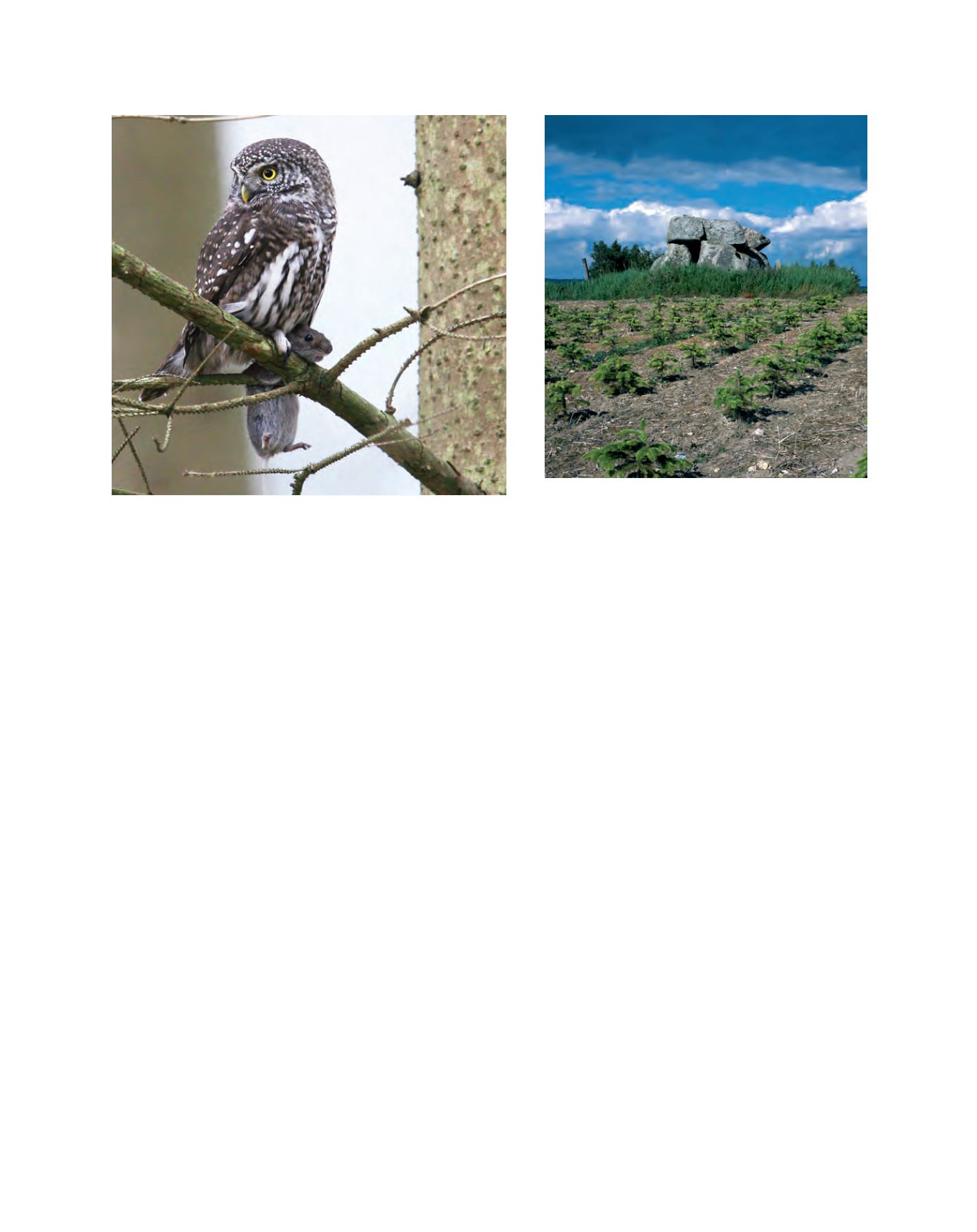

[
] 178
Thirdly, afforestation was promoted. It began at slow
rates, led by state planting activities, and was rapidly
increased by the late 1860s. Various factors triggered
this. One of these was the bitter loss of one third of the
country’s land area to Preussen and Austria in the war in
1864. Using the slogan “What is outwardly lost must be
inwardly won”, the Danish patriot and enthusiastic agita-
tor Enrico Mylius Dalgas managed to turn afforestation
into a national movement with broad public support.
The positive will was underpinned by public grants and
a general belief in the positive contribution of timber
production to the economic development, benefiting
both the landowners and society as a whole.
A large share of the afforestation was allocated along-
side the coastline in order to mitigate sand drift, in
particular in the western parts of Jutland. In the 1930s,
during the recession, afforestation was also welcomed
as a good means of job creation. It was promoted and
remained high until the 1960s, when high employment
rates and a booming agriculture industry slowed down
afforestation activities again.
Fourthly, but not least, the replacement of timber
with coal as the main energy source did unquestion-
ably help reduce the pressure on the forests during the
industrial revolution in the late 18th and early 19th
century. According to some historians this might have
been the most significant factor of them all.
A new era in 1989 – long-term goal to double
forest cover
In 1989 new visions, new measures and new regulatory
mechanisms were introduced, both for forest manage-
ment and for afforestation.
Around the year 1600, the forest cover was reduced to 20-25 per
cent. It dropped further down to 8-10 per cent in 1750 and reached
a low of only 2-4 per cent around 1800.
Apart from running short of timber and non-timber forest, parts
of the country now also suffered severely under storms and sand
drift. Crops and fertile agricultural lands could be buried in thick
layers of sand overnight, thereby destroying decades of hard work
by farmers.
Evidently, the situation had become out of control and there was
a growing understanding of the need for radical change.
200 years of recovery
Four major changes have paved the way for a slow, but steady recov-
ery of the Danish forests:
Firstly, a new regulatory mechanism for forest management and
use was adopted in 1805. The key elements included a new division
of ownership and use rights. They were now given to one party
only, not split between different groups. The squires and lords of
manor got the rights to the best forests, whilst rights to own and
use the poorer, low quality forests were given to the former tenants.
In addition, grazing in forests was abandoned and – not least – the
principle of permanent protection of classified forest reserves was
established. It applied to the majority of forest land at the time and
prevented conversion of forests to other land uses. To this very day,
this key principle has remained the backbone of Danish forest legis-
lation. The Forest Act of 1805 also established that forests had to
be properly managed, with a view first and foremost to securing the
long-term production of timber.
Secondly, forest management systems were introduced and
promoted, with assistance of the then highly acknowledged German
forestry expert, Johan Georg von Langen. He introduced systematic
replanting after clear cuts and the introduction of a number of high-
yielding exotic species.
Biodiversity conservation is a key priority in the Danish NFP. Eurasian Pygmy Owl
(
Glaucidium passerinum
) seen resting after a successful mouse hunt in “Rude Forest”
A plantation of exotic conifers cultivated for the production of
Christmas trees – a popular and economically high-yielding
production both within and outside forest areas in Denmark
Image: ©Nis Lundmark Jensen
Image: ©Bert Wiklund
















